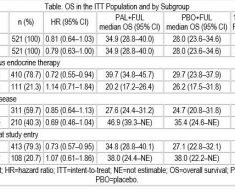Forty-two percent of all deaths in the United States are related to cardiovascular disease (CVD). According to the Global Cardiovascular Drugs Market Forecast, by 2030 the number of deaths from CVD will rise to 23.6 million per year in the U.S. alone. Along with increased deaths, spending on drugs to treat CVD as well as related hospital stays, home health care and lost productivity will also rise.
A Wayne State University research team led by Phillip Levy, M.D., MPH, FACEP, FAHA, FACC, the Edward S. Thomas Endowed Professor and Associate Chair for Research in the Department of Emergency Medicine, and assistant vice president for Translational Science and Clinical Research Innovation, in collaboration with Arterez, LLC, a Michigan-based biopharmaceutical company, has commenced a clinical study to identify the “fingerprint” and diagnostic accuracy of Arterez’ seven patent-pending glycocalyx biomarkers in relation to arterial disease, specifically hypertension and heart failure, the first two of several diagnostic panels WSU and Arterez may collaborate on.
Atherosclerotic plaques that form in arteries lead to coronary heart disease, myocardial infarction, stroke and peripheral arterial disease. Formation of these plaques includes the accumulated injury to the lining of the arteries themselves, known as the endothelial glycocalyx. In research and clinical practice, tremendous emphasis has been placed on controlling cholesterol, with limited attention directed toward the repair and maintenance of the endothelial and related factors Arterez has identified as being critical to achieve prevention and possibly a cure.
Arterez, led by Dr. Joe Tunac, Ph.D., a medical scientist with more than 40 years of drug development experience across the spectrum of disease—including Avermectin, a 2015 Nobel prize-winning drug—has embarked on a journey to discover novel methods of predicting, preventing and curing various diseases within the CVD family including repairing injury to, and subsequently maintaining, the arterial lining by focusing on a set of proteins that make up the glycocalyx. These proteins can be quantified and formulate the basis of an entirely new biomarker pathway to identify individuals at risk for or already suffering from arterial injury who may be amenable to targeted therapeutic intervention.
In addition to the biomarkers, Arterez has discovered a first-in-class, triple-compound oral therapy called Embotricin that proved nontoxic in 28-day studies. In preliminary studies, Embotricin successfully prevented and reversed arterial plaque. Arterez and Wayne State have also begun discussions toward development of Institutional Review Board (IRB) in-human research studies focused on the safety and efficacy of Embotricin, enabling commercialization of a completely novel therapeutic option for management of CVD.
“We are delighted to partner with Arterez on this exciting line of research,” said Levy. “The glycocalyx represents the next area of emphasis in the ongoing battle against CVD, and our collaboration with Arterez represents the leading edge of this effort.”
Source: Read Full Article





